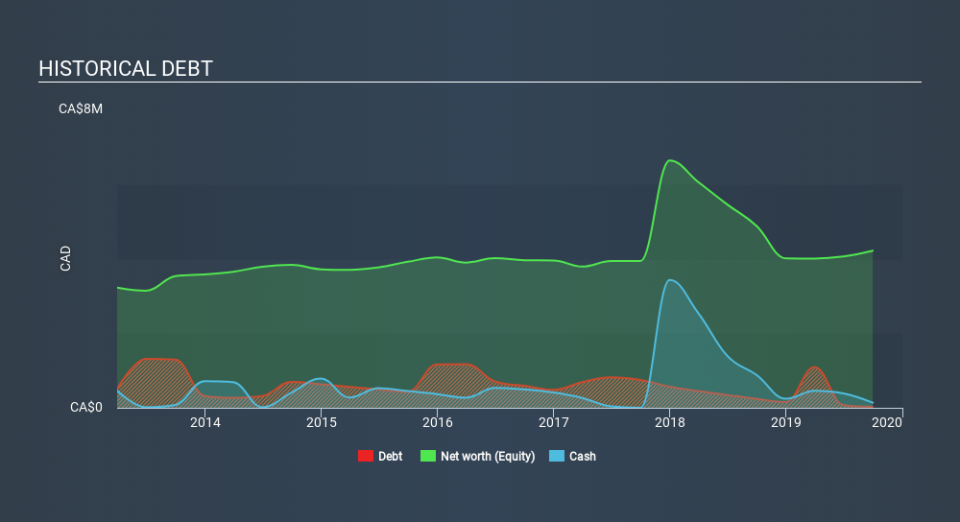Here's Why We're Watching Intouch Insight's (CVE:INX) Cash Burn Situation

There's no doubt that money can be made by owning shares of unprofitable businesses. For example, biotech and mining exploration companies often lose money for years before finding success with a new treatment or mineral discovery. But the harsh reality is that very many loss making companies burn through all their cash and go bankrupt.
So should Intouch Insight (CVE:INX) shareholders be worried about its cash burn? In this report, we will consider the company's annual negative free cash flow, henceforth referring to it as the 'cash burn'. First, we'll determine its cash runway by comparing its cash burn with its cash reserves.
Check out our latest analysis for Intouch Insight
How Long Is Intouch Insight's Cash Runway?
You can calculate a company's cash runway by dividing the amount of cash it has by the rate at which it is spending that cash. As at September 2019, Intouch Insight had cash of CA$139k and such minimal debt that we can ignore it for the purposes of this analysis. In the last year, its cash burn was CA$1.2m. That means it had a cash runway of under two months as of September 2019. To be frank we are alarmed by how short that cash runway is! You can see how its cash balance has changed over time in the image below.
How Well Is Intouch Insight Growing?
It was fairly positive to see that Intouch Insight reduced its cash burn by 38% during the last year. On top of that, operating revenue was up 25%, making for a heartening combination It seems to be growing nicely. In reality, this article only makes a short study of the company's growth data. You can take a look at how Intouch Insight has developed its business over time by checking this visualization of its revenue and earnings history.
How Hard Would It Be For Intouch Insight To Raise More Cash For Growth?
Since Intouch Insight revenue has been falling, the market will likely be considering how it can raise more cash if need be. Issuing new shares, or taking on debt, are the most common ways for a listed company to raise more money for its business. Commonly, a business will sell new shares in itself to raise cash to drive growth. By comparing a company's annual cash burn to its total market capitalisation, we can estimate roughly how many shares it would have to issue in order to run the company for another year (at the same burn rate).
Intouch Insight's cash burn of CA$1.2m is about 12% of its CA$10m market capitalisation. As a result, we'd venture that the company could raise more cash for growth without much trouble, albeit at the cost of some dilution.
How Risky Is Intouch Insight's Cash Burn Situation?
On this analysis of Intouch Insight's cash burn, we think its revenue growth was reassuring, while its cash runway has us a bit worried. Summing up, we think the Intouch Insight's cash burn is a risk, based on the factors we mentioned in this article. When you don't have traditional metrics like earnings per share and free cash flow to value a company, many are extra motivated to consider qualitative factors such as whether insiders are buying or selling shares. Please Note: Intouch Insight insiders have been trading shares, according to our data. Click here to check whether insiders have been buying or selling.
Of course, you might find a fantastic investment by looking elsewhere. So take a peek at this free list of companies insiders are buying, and this list of stocks growth stocks (according to analyst forecasts)
If you spot an error that warrants correction, please contact the editor at editorial-team@simplywallst.com. This article by Simply Wall St is general in nature. It does not constitute a recommendation to buy or sell any stock, and does not take account of your objectives, or your financial situation. Simply Wall St has no position in the stocks mentioned.
We aim to bring you long-term focused research analysis driven by fundamental data. Note that our analysis may not factor in the latest price-sensitive company announcements or qualitative material. Thank you for reading.

 Yahoo News
Yahoo News 

